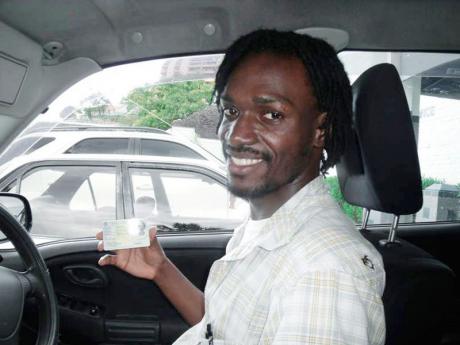Testing times at examination depot - Deaf drivers go through extensive process
Australian Debbie Kennewell, who was born deaf, has been living in Jamaica for the past five years. Although licensed to drive in her home country when she was 18 years old, Kennewell is yet to hold a Jamaican driver's licence.
"I am in the process of testing for one. I'm applying for a standard licence. I tried once and failed. The test process is very rigorous, especially with the side-parking request. This testing phase does not match the experience out on the road. I mean, do you need to steer nine metres sideways to park behind a car?" she demanded.
Further, she said, "The process was made difficult by the paperwork required, and the numerous places you need to visit in order to sit a test. The vehicle inspector assigned was a student of mine in the Jamaican Sign Language training programme at the Jamaican Association for the Deaf (JAD) delivered for the ITA in 2009, so I knew him, and he knew how to approach me, and was aware of my needs."
Kennewell said unlike 'Down Under', the driving experience in Jamaica is marred by indiscipline. "I was taught to drive in a different culture and context. It can be difficult to drive in Jamaica where law obedience isn't very good," she said.
Kennewell has no difficulty communicating with other road users. "This can be achieved through gesturing - just pointing and facial expressions. In a situation where there's an accident and detailed dialogue is required, I can use pen and paper. Or in a serious situation involving police intervention, an interpreter can be booked through the JAD," she said.
Kamar Groves, who got a private driver's licence in March 2011, has been deaf since age three after contracting meningitis. "The first time I applied for a general licence, I failed my exam, so I changed to private licence, and tried again. For the private licence, I did the written test twice. The first time, I did the written and yard test, and the second time, written and road test," he said.
He learnt to drive with an automatic car at 15 years old, and drove with a learner's licence for 11 years. "When I bought a standard car, I learned how to drive stick shift in less than 30 minutes," Groves said.
Tashi Widmer has been deaf since she was nine months old, after contracting an ear infection. She has been driving for the past six years with an American driver's licence, receiving her Jamaican private licence in January this year. "It took roughly six months of learning from my family before I took and passed the United States (US) driver's licence examination," Widmer said.
Widmer did the Jamaican test thrice. "The first time, I failed the reversing part, which I accepted as my mistake. The second time, I 'failed' because I was driving a little above 40 kph, but below 45 kph on several occasions in the road test, despite the fact the road code studybook stated the speed limit is 45 kph for the road test (although, more specifically, for the general license), and 50 kph for city driving," she said.
It was also difficult for Widmer to convince the examiners she should do the written test. "I was almost denied from taking the written test because I did not have any interpreter and instructor with me. This was due to their policy that examinees must vocally read to prove reading abilities and English proficiency," she said.
Neville Aiken, who was born deaf, has been driving for more than 10 years. The holder of a private driver's licence, he visited the examination depot three times before he was successful. "I had no problem to learn to drive. I was learning to drive in the US while I was in college," he told Automotives.
- S.W.
Contributed Photos



